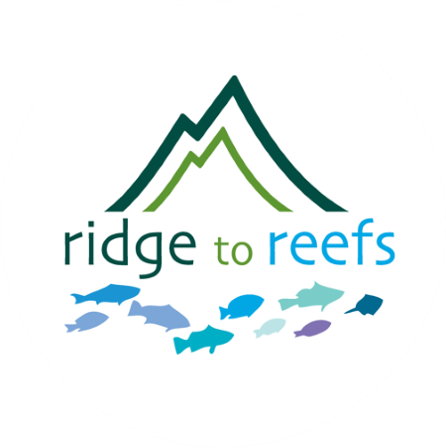Maui Diaries - Day 3: Wasting Water
Sep 30th, 2020
Wastewater management on islands is a unique challenge. Often there is not much distance between wastewater treatment plants or residential cesspools/septic systems and the ocean. Failing wastewater treatment systems are problematic in general; in the case of islands, any untreated water that bypasses the system can easily leach into the groundwater and out to the ocean. This wastewater has been directly linked to coral reef degradation in Hawaii and other places around the world. Over time, Ridge to Reefs has eased into wastewater management on islands. This year especially we have been engineering nature-based solutions to manage this waste in a cost-effective and low-tech way.
Maui County in particular is facing a major issue that our team and partners are working to potentially provide a solution for. Ironically, while water is a limited resource for the island and local farmers, the Reclamation plant has an excess of R-1 wastewater that they have not been able to reuse (e.g. sell to farmers or land owners for irrigation). Until recently, their solution to this issue of excess was to inject this water into the ground. To be clear, R-1 wastewater is treated to a certain extent; in other words, Maui County was not simply injecting raw sewage into the groundwater. This classification of wastewater is not potable nor suitable for edible crop irrigation, but can be used on landscapes safely. However, environmental groups fought against the County’s injection practice. This year, the Supreme Court cracked down on Maui County, so they can no longer inject wastewater without facing severe consequences. Despite their increased diligence in treating this R-1 wastewater to higher environmental standards, they are still seeking a solution to dispose of or reuse this wastewater in a safe and publicly acceptable way.
In partnership with farmer John Astila of Sunshine Vetiver Solutions, who grows and sells vetiver grass among other crops on the island, Ridge to Reefs is piloting a system to dispose of this wastewater through evapotranspiration (water loss by soil and leaves) and inefficient sprinkler irrigation. This system would use up water quickly, since vetiver grass is specialized for fast water uptake, and the climate is so dry much of the sprinkler water would evaporate almost instantly. The pilot will demonstrate how much water vetiver can actually uptake and sprinklers can waste, so that we can calculate how many acres would be needed to achieve 100% disposal. By doing this, we can provide the County with a cost-effective, environmentally-friendly solution.
Brainstorming on John’s leased land adjacent to the Maui County Wastewater Reclamation plant, which will be the location of the pilot project.
It is indeed strange to be designing a system that disposes of water which is so needed by farmers across the island. As of now, this vetiver/sprinkler system would serve the County’s purpose: to dispose of the wastewater in a cost-effective way that is acceptable by the public. Ideally, we also would like to incorporate native species into the mix, or be mindful about placing these sites on priority areas with high erosion; and we may even test out a bioreactor while we’re at it, to further treat the water so that the County can reuse or inject it safely. We spent a long time discussing the options today, and we are moving forward with designs and further conversations to nail down our pilot project.
Through this project, we hope to produce some convincing data that something as simple as deep-rooting, tall grass and sprinklers can solve a wastewater management issue. We are excited to tackle this unique problem through creativity, science, and collaboration.
________________
P.S. There is a wild brush fire about 2.5 miles up the mountain from us. Sure would be a nice way to put some of that excess water to use...
Smoke from the wildfire seen from our car.



